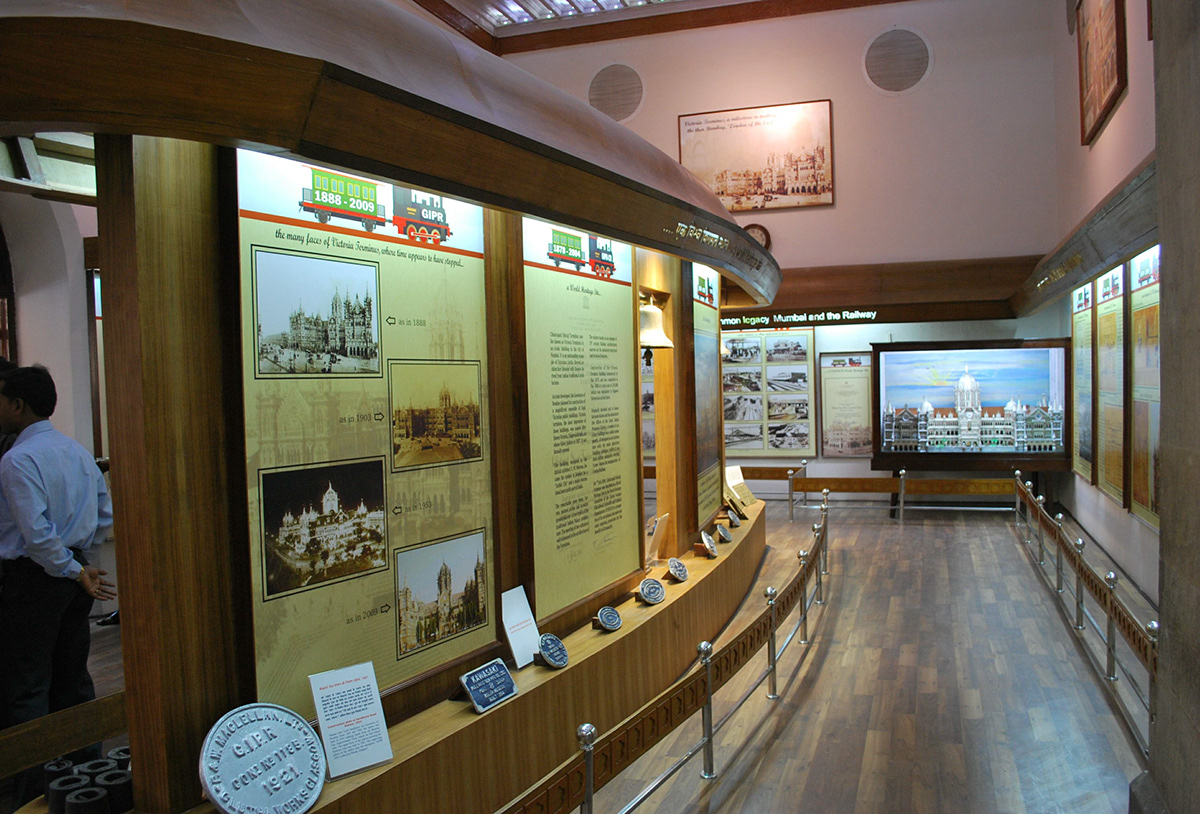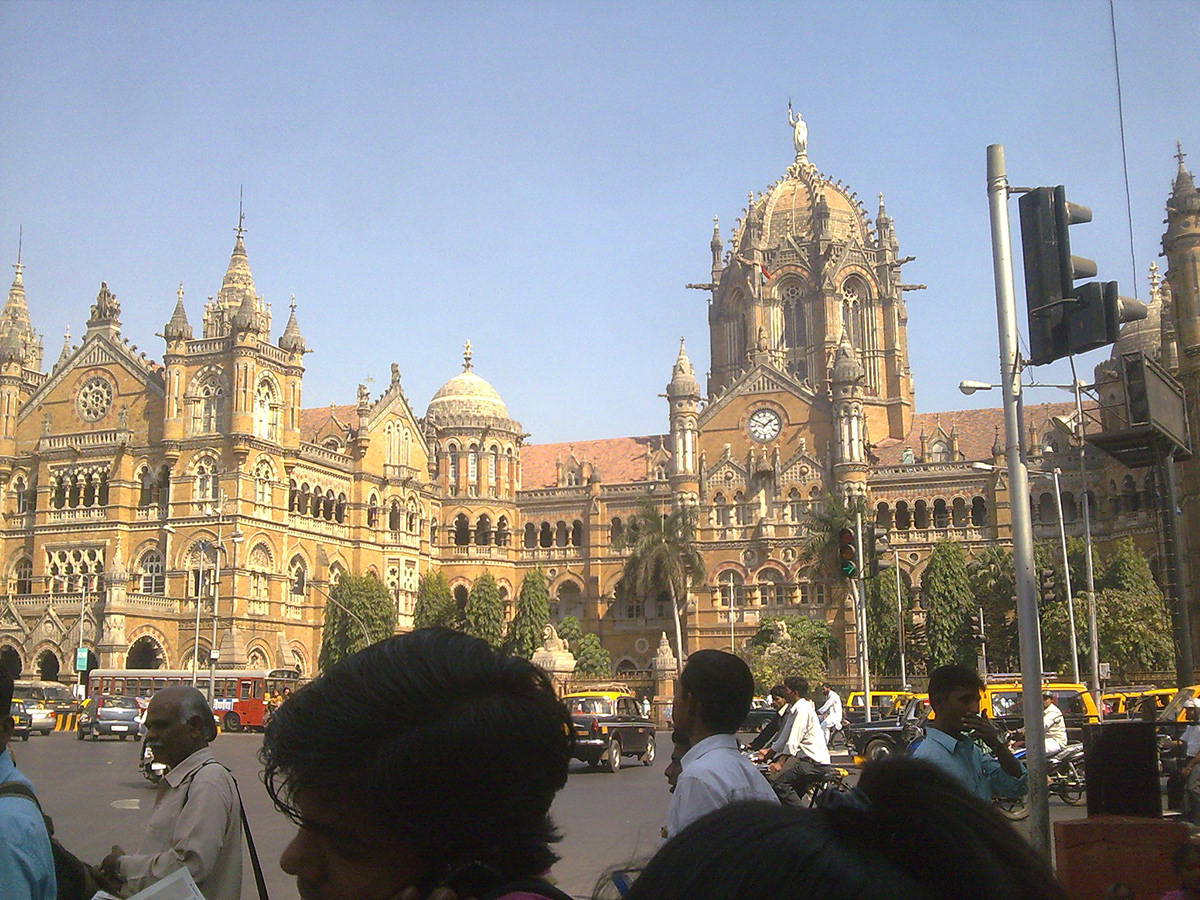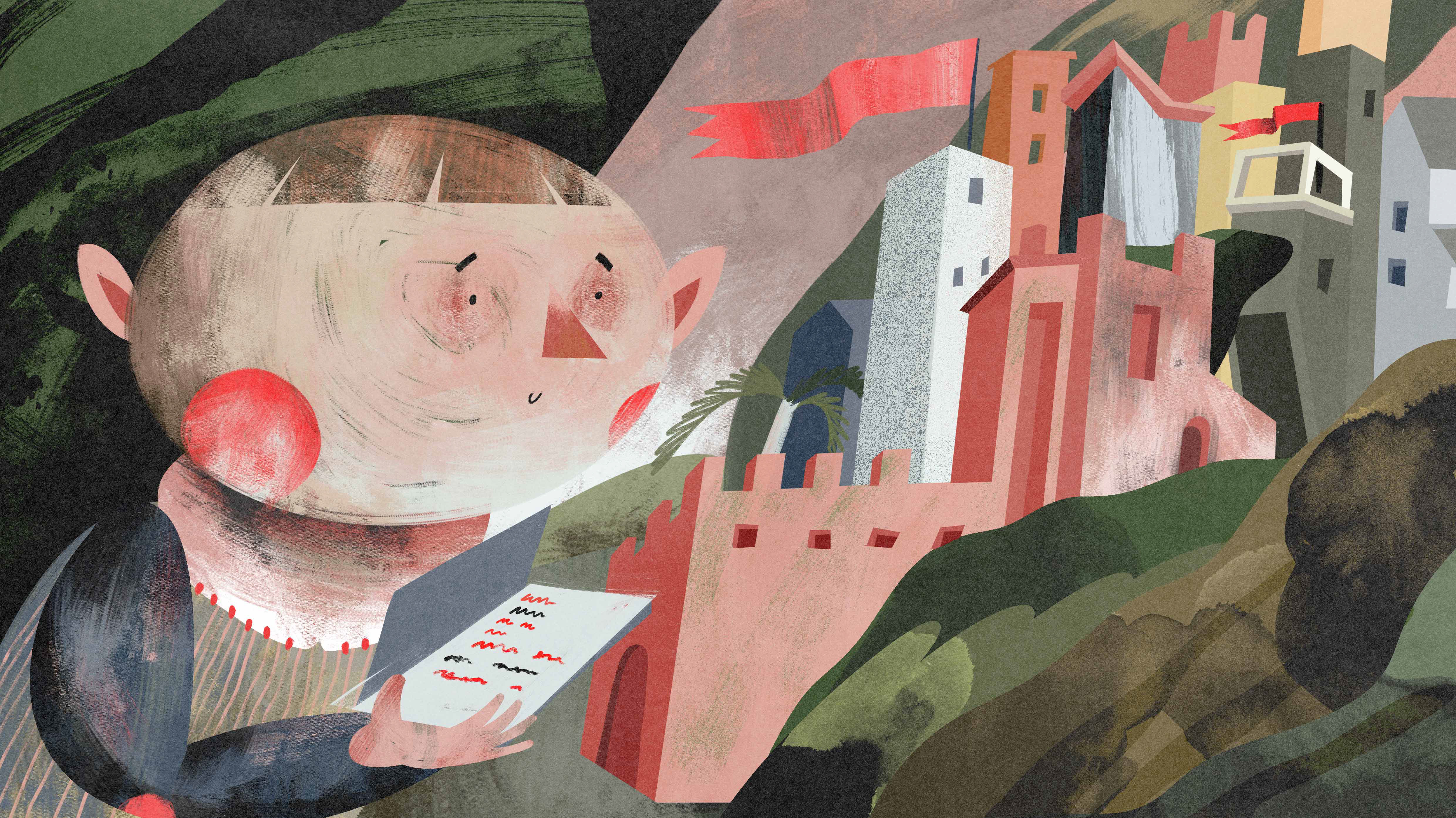Heritage Gallery & Interpretation Centre at CST Mumbai
A pictorial narrative on the beginning of Railways in India, their gradual progress and the new initiatives leading to the declaration of the World Heritage Site.
A pictorial narrative on the beginning of Railways in India, their gradual progress and the new initiatives leading to the declaration of the World Heritage Site.

The paving was renewed using Bharat Tiles from Mumbai and a model of a railway engine in the corridor sets the atmosphere for the gallery.

Several medallions, models of railways and drawings are on display at the gallery which is yet to be opened to the public though it was inaugurated on 29 1 2010.

The Victorian Icon of Mumbai was designed and supervised for construction by F W Stevens started in 1878 and completed in 1888. Designedas an interpretation centre for the World Heritage Site, the 1500 square feetair conditioned gallery at CST is a collection of 160 year old documents,models, drawings, photographs, clocks, badges and other railway memorabilia.There are few other places like the CST terminal in the world where 3.3 millionpeople pass everyday. Some of them could now take some time off their busyschedule to pause and ponder over railway history or the Mumbai of the past.The several tourists who admire the building from outside will have a place toexperience the making of railways in India from the early intentions of theEast India Company to the small railway sheds down to the building of greatmonumental buildings by F W Stevens – the architect of the building and severalother important ones in Mumbai.
Thedisplay begins with the popular railway mascot elephant ‘Bholu’ the guard,welcoming the guests, the invention of the steam engine by James Watt, theearly modes of transport before the railways came in, early railway engines andstations. The narrative that is displayed through LED light lit panels movestowards the building of the Victoria Terminus, the scanned drawings of F WStevens, interiors of railway coaches, to the freedom struggle and variousleaders who used the railways as a vehicle for mass awakening. Variousimportant documents were researched from the archives under the able guidanceof Dr. Sadashiv Gorakshakar, the former curator of the Prince ofWales Museum. Scale models of locomotives, cast metal plaques that were used onbridges, trains and several factory made items have been retrieved and put ondisplay. The display finally culminates in a small room with a TV screen thatshows a 23 minute film on the life of F W Stevens made by film-maker architectRajesh Latkar.
Anarray of 277, 1 watt, light emitting diode (LED) technology brings out therichness of the simple and robust Victorian architecture at the ceiling. Thecorridors that are meant for services create an atmosphere around the largeroom of the museum. The strong and imposing stone arch in the room gives itcharacter and a sense of place. The gently curved central partition takes ametaphorical bow to the visitor and the ‘’solar topee’ canopy recalls thecolonial sahibs we all love to hate.
Thegallery has been the brainchild of B B Modgil the General Manager Railways andrealised under the leadership of Mr. M C Chauhan, Divisional Railway Manager.Conceived by architects ‘Kimaya’ Pune with the railway engineers Rajeev Tyagi(Civil), Ashok Mendhekar (Sr DEE) Brijesh Dikshit (Sr DME), Juniorengineers Zakir Palekar and Ramesh Behra worked continuously to make theproject a success with in a record period of 5 months.
Thedisplay begins with the popular railway mascot elephant ‘Bholu’ the guard,welcoming the guests, the invention of the steam engine by James Watt, theearly modes of transport before the railways came in, early railway engines andstations. The narrative that is displayed through LED light lit panels movestowards the building of the Victoria Terminus, the scanned drawings of F WStevens, interiors of railway coaches, to the freedom struggle and variousleaders who used the railways as a vehicle for mass awakening. Variousimportant documents were researched from the archives under the able guidanceof Dr. Sadashiv Gorakshakar, the former curator of the Prince ofWales Museum. Scale models of locomotives, cast metal plaques that were used onbridges, trains and several factory made items have been retrieved and put ondisplay. The display finally culminates in a small room with a TV screen thatshows a 23 minute film on the life of F W Stevens made by film-maker architectRajesh Latkar.
Anarray of 277, 1 watt, light emitting diode (LED) technology brings out therichness of the simple and robust Victorian architecture at the ceiling. Thecorridors that are meant for services create an atmosphere around the largeroom of the museum. The strong and imposing stone arch in the room gives itcharacter and a sense of place. The gently curved central partition takes ametaphorical bow to the visitor and the ‘’solar topee’ canopy recalls thecolonial sahibs we all love to hate.
Thegallery has been the brainchild of B B Modgil the General Manager Railways andrealised under the leadership of Mr. M C Chauhan, Divisional Railway Manager.Conceived by architects ‘Kimaya’ Pune with the railway engineers Rajeev Tyagi(Civil), Ashok Mendhekar (Sr DEE) Brijesh Dikshit (Sr DME), Juniorengineers Zakir Palekar and Ramesh Behra worked continuously to make theproject a success with in a record period of 5 months.
The 360 1 watt LED lights in the ceiling make an interesting feature of the interior that livens up the space. Many of F W Steven's drawings were scanned and composed to make the posters that add to the period atmosphere between the ceiling and the eye level display boards.
An existing arch was used to create a tunnel effect for the train that carries the display that narrates the story from James Watt's steam engine to the UNESCO World Heritage Site declaration.
Bells medallions and other objects of interest form a part of the display with occasional gaps to relate to the other parts of the gallery.




